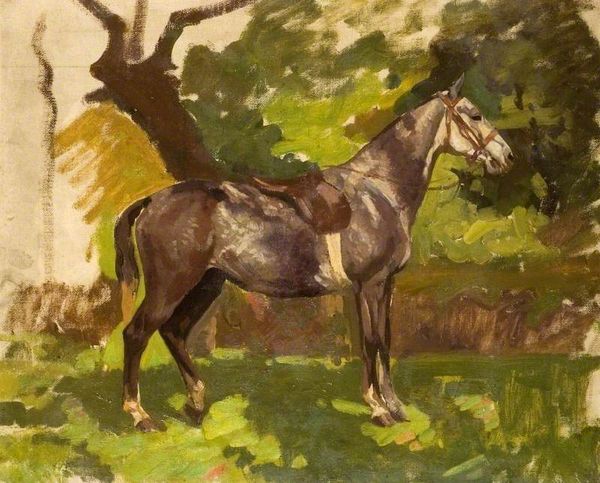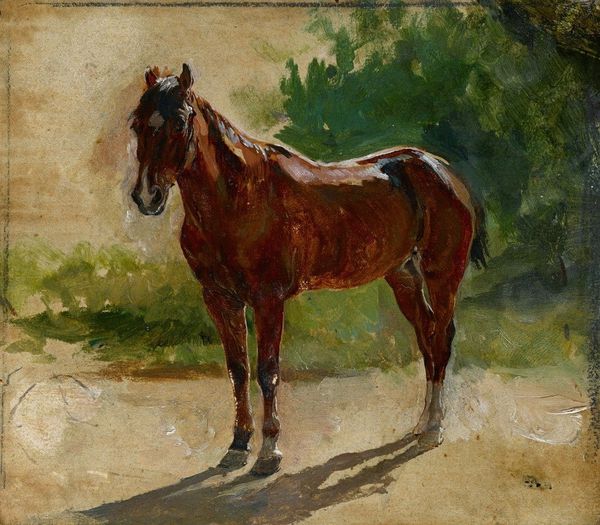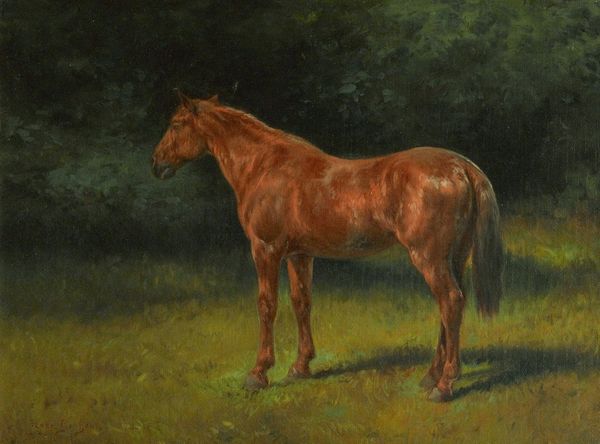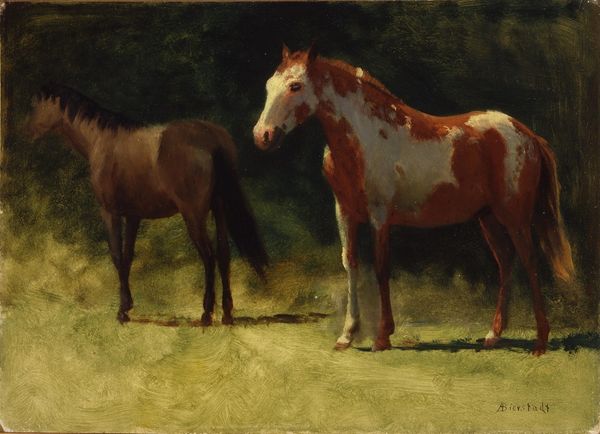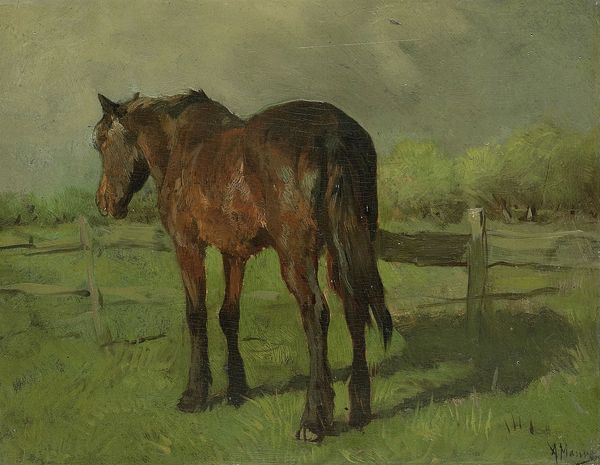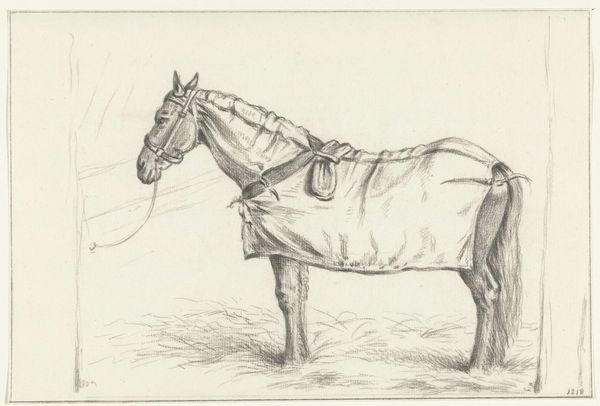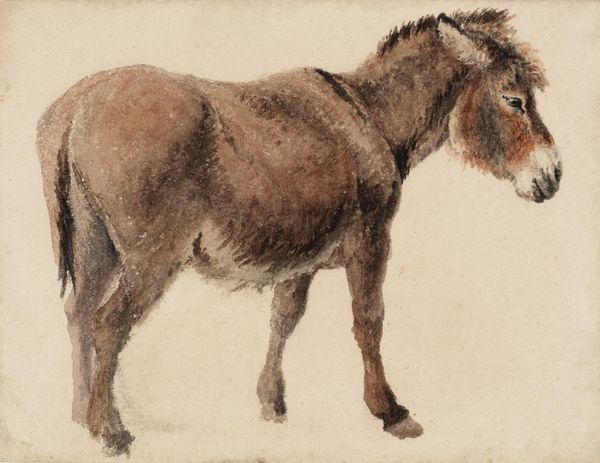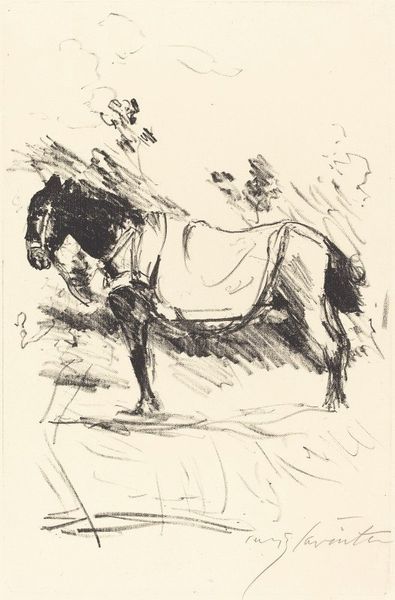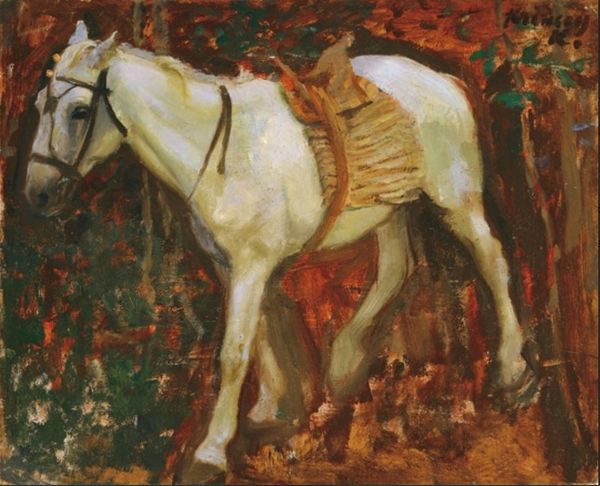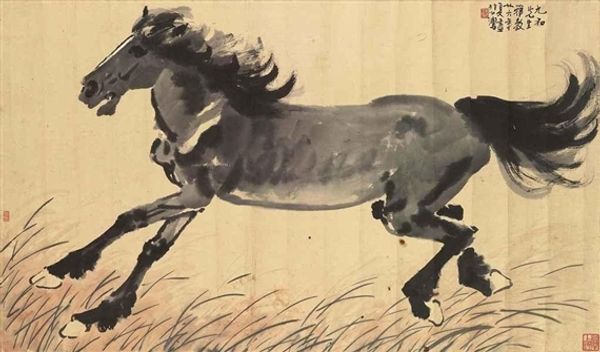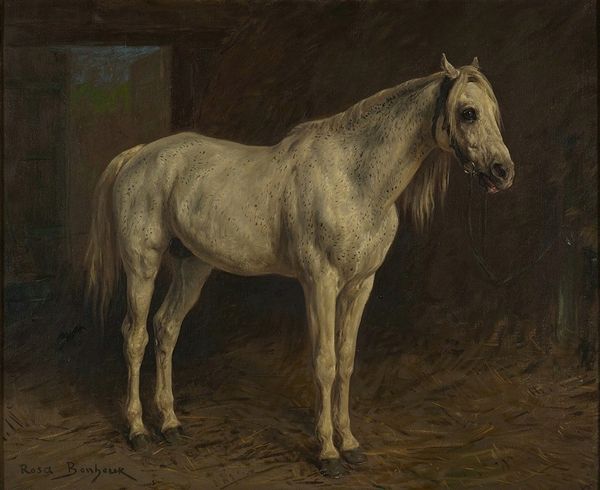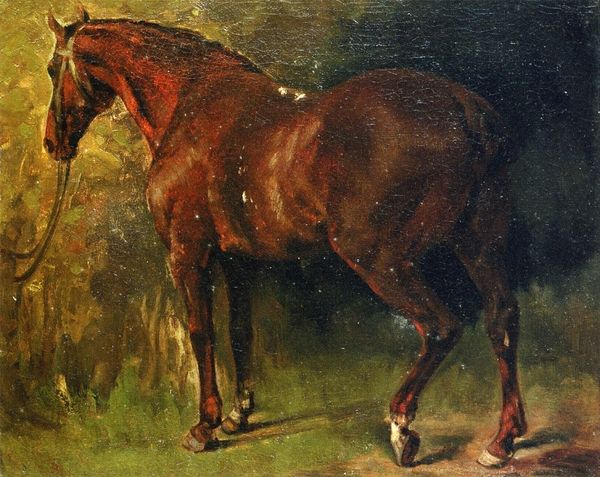
watercolor
#
animal
#
impressionism
#
landscape
#
figuration
#
watercolor
#
watercolour illustration
Copyright: Public Domain: Artvee
Pierre-Auguste Renoir’s “Un Cheval” is an undated watercolor and gouache on paper artwork depicting a saddled horse in a field. Renoir applied color in strokes, without mixing them on the pallet, letting them fuse optically on the surface of the page. The visible brushstrokes, particularly in the rendering of the foliage behind the horse, reveal the directness of the artist's engagement with the materials. The fluid nature of watercolor allows for spontaneous gestures, while the opacity of gouache adds depth and texture. The artist’s swift and unlabored strokes bring forth questions about leisure, class, and access to the countryside and the arts in nineteenth-century France. In the hierarchy of art forms, watercolor is often viewed as a less formal medium than oil paint. Renoir’s choice of watercolor emphasizes its immediacy and accessibility, blurring the line between sketch and finished work. The horse depicted is not just an animal, but also a symbol of labor, leisure, and social status. This painting emphasizes the importance of considering not just the subject matter, but the materials and processes employed in its creation, ultimately challenging conventional notions of fine art and craft.
Comments
No comments
Be the first to comment and join the conversation on the ultimate creative platform.
